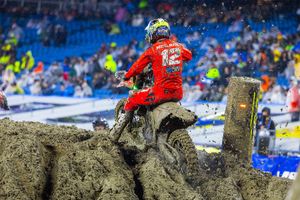When more than 100 competitors in this year’s Australasian Safari take off into the West Australian outback on Saturday, they will be marking the 25th year of this Aussie endurance adventure.
The Australasian Safari began in August 1985 as the Wynns Safari. The first event included several international Paris to Dakar competitors and more than 200 starters. The race was so tough, more than 75 percent of the field retired after the first competitive leg.
The event has changed locations, distances, sponsors and challenges over the years, but was has not changed is the tough and talented competitors, many returning year after year to take on the Aussie outback.
Many legends of motor racing have competed in the Australasian Safari since 1985. The first race featured the likes of legendary driver Larry Perkins driving a VW beetle, and John Hederics – the most successful competitor to date with six moto first placings and three firsts in the auto division.
Other competitors of note from the past 25 years include Australian motorsport racing legend the late Peter Brock, rallying champion Ross Dunkerton, AFL star Tony ‘Plugga’ Lockett, past Paris to Dakar winners from around the globe, and even Japanese film stars.
The moto category has had its fair share of characters over the years, and one mainstay has been Glenn Hoffman, who competed in his first Safari in 1986, aged 18. After managing teams for the past couple of years, Glenn is getting back in the hot seat, but this time in the auto category.
Safari has attracted people from as far afield as Japan, Russia, Germany, France, Great Britain, Turkey, Italy, USA, Argentina, Taiwan and the Czech Republic over the years, and in 2010 we will see our first Brazilian competitor – the country’s number one off-road moto champion, Ze Hélio – experience the harsh Australian outback for the first time.
Internationally-renowned Brazilian moto competitor Ze Hélio competing in his first Australasian Safari. He is Brazil’s number one rallye racer, five-time winner of the Rallye dos Sertoes, and came 12th outright at Dakar 2009.
He will be joined by Swedish Rally Princess Annie Seel who had her first Australian encounter at the 2009 Safari and is returning for more pre-Dakar training.
Annie is a veteran of the international off-road racing circuit, having competed in four Dakars (named 2010 Female Champion) and more than 60 international rally sport events.
Ben Grabham, three-time Finke winner and two-time Safari winner in 2007 and 2008, fighting to regain his first place position is another to keep an eye on during the event.
Also be sure to watch out for last year’s outright moto winner Jacob Smith and brother Todd Smith, who placed second outright in 2009.
Regular rally fans will also be cheering for David Schwarz, competitor in two Dakars and seven Safaris with multiple class wins and placings in 2009.
The event has survived floods, bushfires, and the days long before GPS navigation when the Royal Flying Doctor Service was the only reliable form of remote communication.
Today, the event travels with two planes, a helicopter, satellite dishes, 50+ satellite phones, seven generators, semi trailers, trucks, motor homes and about 560 people made up of competitors, support crew, officials, family and friends, medical teams, TV production crew, and international media.
Event Director Justin Hunt said although the technology had changed, the philosophy of Safari remained the same.
“We attract many repeat competitors because the event is really a family of motorsport and outback enthusiasts who love to personally challenge themselves against the harsh terrain of the Australian outback,” Hunt commented.
“We rely on an army of volunteer officials who return year after year and give their time to be part of this pretty unique experience. This year, the course will again be tough, and mental as well as physical strength will be key to completing the full seven days of competition.”
Considered one of the world’s great endurance events, the Australasian Safari will this year see the auto, moto and quad competitors travel through remote Western Australian goldfields, desert, rugged bush and coastal dunes before hitting the southern coast at Esperance.
The event is supported by the Western Australian Government with coverage of the event broadcast into key international tourism markets.





